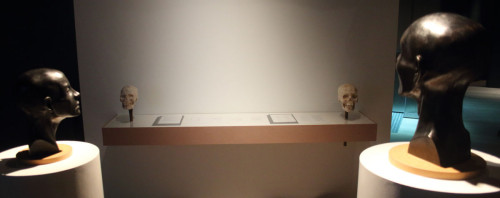Forensics, the mysterious solver of difficult to solve crimes that is the mainstay of many a crime novel and daytime TV series, is also now the topic of a new exhibition at the recently refurbished Wellcome Collection.
Real-life forensics is seemingly as clinically austere as its media representation is its polar opposite, but the history of how we went from guesswork to clear solid scientific principles is itself a fascinating one.
The exhibition is not a chronological examination of the examinatory arts of forensics, but a thematic one, with a focus on key aspects of the art-turned-science, and a few notable criminal cases.
A tiled floor hints at murder with faint memories of blood, and a nearby, not easy to find sign notes that this is from the studio of a Mexican artist, whose friend died in the room.
Elsewhere, more scientific uses of the photography art line the walls as early practitioners of the art came to understand the value of accurate recording to the scene of the crime.
Of course, the most familiar image of the forensics lab is the cold slab that is the temporary home for many people between dying and burial. In this case, a long since discarded design, the porcelain slab with its drainage channels for human waste. These days, they prefer metal for their tables.
Dotted around the room, the historical records of the study of the human body, and the political strife to overcome the institutional prejudices in objurgate humans.
While Britain may have invented the greatest detective, it was the French who claim credit for the father of modern day forensics, Edmond Locard, which a newspaper of the time brazenly declares to have bested Sherlock Holmes at his own game following one notorious case.
And of course, there are the crimes, laid out mostly in the form of more newspaper articles.
One room, which could pass for an art exhibition, and does have some art in it, also demonstrates the skill in turning a skull into a reasonable likeness of the person who once owned it.
However, it is the last room which should give justified pause for thought following this homage to the cold sciences of forensics. Police work still relies too often on eye witnesses, and human memories are shockingly malleable and what you remember one moment can change over time to a totally different perspective, without you even noticing it happen.
Miscarriages of justice occur, and it is in part the improvements in forensics that help prevent, or later overturn them — and a series of photos of people who were incorrectly jailed returning to the scene of someone else’s crime is a somber conclusion to an educationally fulfilling exhibition.
The exhibition is free to visit, and open daily until 21st June.









